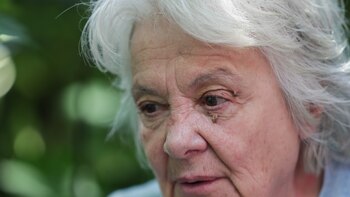
Aniceto Molina's first contact with the accordion was at the age of 12. That boy, who was born on April 17, 1939 in a finca in the small town of El Campano in Córdoba, did no more work than those of a veteran farmer; but when he turned 18 he packed his bags and took a bus on the way to Cartagena to record his first album, leaving his brothers on the farm that, years later, was divided between them except him, because he had told his father that he did not want a single plot of land.
He did not decide that out of stubborn or out of pride, but because of his later vocation as a nomad; however, and despite his travels and the disruption of his troubled life, he never let go of his roots, and by the time he returned, he did so in the hope of seeing that prosperous estate in the hands of his family, but he found a desolate panorama for him: that piece of land, only two hectares belonged to theirs, the rest had been sold to third parties.
He actually wanted to buy it, because he had saved money from his work as a member of Los Corraleros de Majagual and Los Caporales de Magdalena. He began by acquiring a small fragment, and over time he ended up acquiring 30 hectares that were enough for him to erect the walls that, as a child, made up his house. The land was yours again, as was the accordion music.
A brief contextual review: after the second half of the 20th century, in Colombia the guaracha was composed of an accordion, a raspa and airs that came quite close to puyas. At that time there was the title of 'King of the Guaracha' and it was awarded to Aníbal Velásquez; even when this qualifier is still mentioned among the connoisseurs of these rhythms, the memory of songs such as 'Cinco pa' las twelve ', 'El cumbanchero' and 'El Turco Perro', hymns of the genre that had their cradle in the vallenato.
It may interest you: Morat's concert in Venezuela almost ended in tragedy: woman pulled a gun
Velásquez was precisely one of Molina's musical guides: he could not have the best teacher. And as with many of the great stories, the first meeting between the two was not coordinated. Who could have thought that little Aniceto lived in the same hairdresser where the guaracha 'master' was going to cut his hair? Perhaps the owner of the establishment, but he did not measure the significance of that relationship that began when Hannibal told the young man to go and touch him.
He played with the singer-songwriter, but not the accordion but the cowbell (which also became famous among his songs), and every night, Molina practiced the steps his mentor did in the afternoons during each rehearsal and performance. On one of his trips to the coastal towns, he met a Venezuelan, and with him they traveled from San Antonio del Táchira to Barquisimeto. It was in that country that his fame was really born thanks to leading the group 'Anacleto Molina and his ensembly'.
He returned to Colombia in style, but with an intrigue: the accordion was known all over the world, which is why he deduced that it was not properly born in Alta Guajira. He played alongside Alfredo Gutiérrez when he entered Los Caporales del Magdalena and there he met Rubén Darío Salcedo; together they had consolidated themselves within a line of folk musicians that predicted success and long life for the cumbia, the joint and the guaracha itself.
Before embarking on his long journey through Mexico (where he lived for 10 years), he was part of Los Corraleros de Majagual, and in Central America he meddled in northern music, collecting elements to contribute to Colombian folklore. Later, he settled in the United States where, at the age of 76, he died.
The singer had the peculiarity of announcing, before playing each song, what genre it belonged to, so as not to confuse his audience because he knew that between cumbia, guaracha and vallenato there were several similarities sometimes imperceptible to beginning listeners.
His name and legacy have been as important as that of Celso Piña and Alfredo Gutiérrez himself, and although he did not have the same media boom as that King Vallenato who dared to play the accordion with his feet, he did make invaluable contributions to the cumbia, the joint and the four airs of the vallenato, to such an extent that groups like Los 50 by Joselito have adapted their works.
In addition, the 'Cumbia Cienaguera', whose interpretation became an icon, will remain valid, and as long as that happens, its legacy too, as did the estate that saw it born.
KEEP READING
Últimas Noticias
Debanhi Escobar: they secured the motel where she was found lifeless in a cistern

The oldest person in the world died at the age of 119

Macabre find in CDMX: they left a body bagged and tied in a taxi
The eagles of America will face Manchester City in a duel of legends. Here are the details

Why is it good to bring dogs out to know the world when they are puppies




